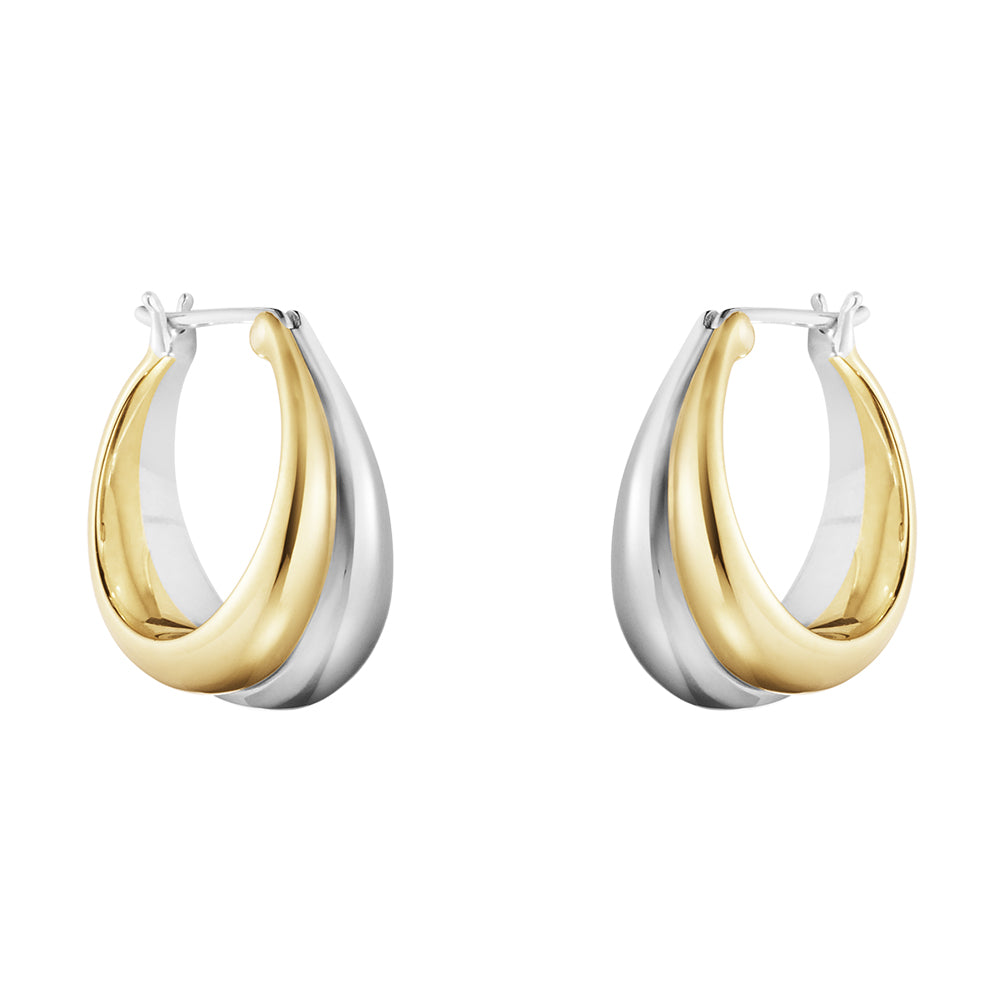
How to Sanitize Earrings: Ear & Jewelry Care
Introduction
Earrings express personality and style, but hygiene is key. Regular wear exposes them to sweat, oils, and bacteria, risking infection. This guide covers how to sanitize earrings, shares lesser-known care tips, and highlights why hygiene matters for beauty and longevity.

Why Sanitizing Your Earrings Is Crucial: The Science Behind Clean Jewelry
Before mastering how to keep earrings clean, it's worth understanding why hygiene is so essential in the first place. These delicate accessories rest directly against your skin, often worn for hours—or even days—at a time. Whether you're sweating during a workout, navigating a dusty commute, or simply going about your day, your earrings are quietly collecting a cocktail of oils, debris, and invisible microorganisms.
A Hidden Breeding Ground
Imagine slipping off your earrings after a long day only to find a faint odor or dull residue. That’s not just dirt—it’s a sign of microbial buildup. The warmth and humidity behind your earlobe create a perfect environment for bacteria and fungi to flourish. Intricate designs, porous surfaces, and rarely cleaned clasps only accelerate this growth. Left unchecked, these microbes can cause anything from mild irritation to more serious issues like cellulitis or fungal infections, often dubbed "ear fungus".
Scientific Insight
Studies in dermatology have shown that the skin around piercing sites can develop biofilms—a sticky matrix of bacteria that adheres tightly to metal surfaces. These biofilms are notoriously resistant to casual rinsing and can cause recurring inflammation. In extreme cases, they may even contribute to chronic ear infections requiring medical treatment.
Routine cleaning disrupts this microbial party before it starts. It helps eliminate invisible threats and gives both your skin and your jewelry a cleaner, safer environment.

Material Matters
Ever noticed how certain earrings seem to stay pristine while others tarnish quickly or feel itchy after a few hours? The difference often lies in the material. High-quality metals like gold, sterling silver, or medical-grade titanium naturally resist bacterial colonization better than cheaper alloys or plated pieces. But quality doesn't make them immune—dirt, sebum, and sweat still cling to the surface over time. Without proper upkeep, even luxury earrings can cause irritation or lose their luster.
Less durable materials, on the other hand, not only tarnish easily but may also react with your skin, releasing allergens or toxins as their surface deteriorates. In these cases, regular maintenance isn't just about looks—it's a matter of comfort and skin safety.
Additional Consideration
Nickel sensitivity is one of the most common metal allergies worldwide. Subpar earrings often contain nickel as a filler metal, which can leach into the skin and provoke allergic contact dermatitis. This can result in itching, blistering, or long-term sensitivity. For those with hypersensitive skin, opting for hypoallergenic metals and regular sanitation is not optional—it’s essential.

Avoiding Unwanted Complications
Let’s say you're in a rush one morning and reach for your go-to pair of hoops, not realizing they haven’t been cleaned in weeks. A few hours later, your piercing feels tender, warm, and slightly swollen. This scenario is all too common. Tiny particles of dust or bacteria trapped near the post can trigger your body's immune response, leading to inflammation, pain, and even pus buildup.
While cleansing your piercing site daily helps, it only addresses half the problem. If the earrings themselves carry harmful microbes, you're reintroducing risk every time you wear them. That’s why maintaining both the jewelry and the piercing area is key to preventing infections and ensuring your ears stay healthy.
Expert Tip
Dermatologists recommend avoiding the reuse of uncleaned earrings after swimming, exercise, or travel. These conditions increase skin permeability and bacterial exposure, raising the chance of infection. Always sanitize your earrings immediately after activities that involve sweat or environmental exposure.

How to Sanitize Earrings: A Comprehensive Guide
Sanitizing your earrings isn’t just about restoring their sparkle—it’s about protecting your skin, preserving the craftsmanship of your jewelry, and ensuring the longevity of these miniature masterpieces. Earrings, especially those made from premium materials or intricate designs, sit in direct contact with one of the body’s most sensitive areas: the pierced ear. Infections can arise from improper hygiene, even with the most beautiful pair of earrings. Therefore, understanding how to clean them correctly is essential—not only for appearance but for health.
Let’s explore a deeper, step-by-step method for sanitizing earrings using both time-tested household techniques and expert-approved practices.
1. Prepare the Right Tools and Cleaning Solutions: Your Home Jewelry Clinic
Before beginning the cleaning process, make sure your hands are thoroughly washed. This often-overlooked step prevents the transfer of new bacteria to the earrings.
Here’s what you’ll need:
-
A soft microfiber cloth or sterile cotton pads
-
A small, clean bowl for soaking
-
Mild, unscented liquid soap (baby soap or castile soap is ideal)
-
Lukewarm distilled water (to avoid mineral build-up)
-
70% isopropyl alcohol or hydrogen peroxide (as a disinfectant)
-
A soft-bristled toothbrush or a baby toothbrush (for hard-to-reach areas)
-
Jewelry polishing cloth (optional, for metals like gold or silver)
-
Tweezers or silicone-tipped tongs (for handling delicate earrings)
Pro Tip:
If your earrings contain pearls, opals, or other porous gemstones, avoid alcohol-based solutions as they may damage the surface. Instead, use gemstone-specific cleaning agents, or consult a professional jeweler.
2. Soap and Water Bath: The Gentle Foundation
Most earrings, whether fine gold huggies or elegant silver studs, benefit from a simple soap and water soak. This method is gentle on precious materials and helps dissolve natural buildup from sweat, sebum, or environmental dust.
Step-by-Step:
-
Mix a few drops of mild soap into a bowl of lukewarm distilled water.
-
Submerge your earrings and let them soak for 10 to 15 minutes.
-
Gently agitate the water occasionally to loosen grime.
Detail Cleaning:
Using a soft toothbrush, carefully brush around the prongs, posts, and backs of your earrings. Focus especially on the areas where the earring touches the skin—these are hotspots for bacterial accumulation. For earrings with intricate filigree or gemstone inlays, use a wooden toothpick wrapped in a moist cloth to reach crevices without scratching.
Subtle Feature Tip:
For huggie earrings and small hoops, which often have hinge mechanisms or hidden clasps, be sure to inspect the joint area for buildup, which can affect both hygiene and closure integrity over time.
3. Disinfect with Isopropyl Alcohol: Eliminating the Invisible Threat
After physical cleaning, disinfection is key. Even when earrings appear clean, microscopic pathogens may remain. Isopropyl alcohol (70%) is recommended by the Association of Professional Piercers (APP) for surface sterilization, provided the jewelry is made from non-porous, high-quality materials such as implant-grade titanium, surgical stainless steel, or solid gold.
How to Apply:
-
Soak a cotton pad or microfiber cloth in alcohol.
-
Gently wipe all parts of the earring, especially the post and closure.
-
Allow the earrings to sit in the open air for a few minutes to let the alcohol fully evaporate.
Sensitive Skin Note:
If you experience irritation from alcohol, consider sanitizing wipes designed specifically for body jewelry. These often include soothing agents like chamomile or aloe vera.
Caution:
Never soak earrings with glued gemstones in alcohol—it may dissolve the adhesive and loosen the stones.

4. Rinse and Dry: A Crucial but Overlooked Step
While disinfection kills bacteria, any residue left behind can still irritate the skin. Therefore, rinsing is vital.
-
Use distilled water to rinse the earrings thoroughly.
-
Pat them dry with a lint-free cloth.
-
Lay them flat on a clean towel and allow them to air dry fully.
Important:
Even a droplet of retained moisture inside a screw-back or clasp can breed bacteria. Never rush the drying process. Use a cotton swab to wick away hidden moisture if needed.
5. Smart Storage: Extend the Clean
Clean earrings deserve clean storage. Avoid placing them directly into jewelry boxes with velvet or felt linings if they’re still slightly moist—the plush material can harbor bacteria and accelerate tarnishing.
Ideal Storage Tips:
Use a compartmentalized jewelry box with a lid to minimize exposure to air and dust.
Keep silica gel packets nearby to absorb excess moisture in humid environments.
For daily-wear pieces, consider a dedicated UV-sanitizing jewelry case—a modern solution that combines storage and hygiene.
Bonus Tips for Specific Earring Types
-
Gold or Platinum Earrings: Polish gently with a gold-specific polishing cloth after cleaning to restore luster.
-
Silver Earrings: Use anti-tarnish cloths and avoid soaking in water for too long. A baking soda paste can be used occasionally for deeper tarnish.
-
Gemstone Earrings: Never expose to ultrasonic cleaners unless the stone is verified stable (e.g., diamond, sapphire). Organic gems like pearls require only damp cloths and zero soap.

The Value of Earrings: More Than Just Accessories
Jewelry worn so close to the skin does more than just decorate—it reflects personality, enhances confidence, and completes one’s overall appearance. A thoughtfully chosen pair has the power to transform a simple outfit into something memorable, whether it’s a laid-back brunch look or a formal evening gown. Often gifted or purchased to commemorate milestones like anniversaries, birthdays, or career achievements, these pieces carry not just style, but sentiment.
However, their ability to shine—both literally and symbolically—depends on how well they’re cared for. Regular cleaning not only maintains their appearance but also preserves the emotional value attached to them. When cared for properly, these elegant adornments remain radiant and safe to wear, continuing to embody the grace and strength they were chosen to represent.
Materials like solid gold, platinum, or sterling silver further enhance this longevity. Their natural durability and resistance to tarnish make them ideal for daily wear. Choosing such quality pieces is more than a fashion decision—it’s a form of self-respect, an investment in well-being, and a quiet act of valuing both your style and your health.

Deeper Thought
Heirloom earrings passed through generations remind us that jewelry is a living archive of memory. When you sanitize and care for your earrings, you’re not just preserving metal—you’re safeguarding meaning. A properly cared-for pair of earrings can be worn for decades, even lifetimes, continuing to tell stories far beyond their original moment of purchase. This emotional durability is what makes routine cleaning and proper storage more than just habits—they are acts of preservation.
Additionally, in the age of fast fashion and throwaway trends, investing time in the care of your earrings reflects a broader mindfulness about sustainability. Fewer replacements, less waste, and more meaning—these are the invisible rewards of proper jewelry care.

FAQ
Q1: Can I use alcohol to clean all types of earrings?
A1: Alcohol is safe for most materials, but avoid using it on porous stones (such as pearls) or delicate finishes, as it can cause damage. Always check the material before applying alcohol.
Q2: How often should I sanitize my earrings?
A2: It's a good idea to sanitize your earrings at least once a week, especially if you wear them daily. If you experience irritation or discomfort, clean them more frequently.
Q 3: Can bacteria survive on metal surfaces like gold or silver earrings?
A3: Yes, although metals like gold and sterling silver are less hospitable to bacteria compared to porous or organic materials, microbes can still survive on their surfaces for hours or even days. Sweat, skin oils, and environmental particles form biofilms that shield bacteria, making routine sanitation essential.
Q4: Can I use a regular jewelry cleaner for all types of earrings?
A4: Jewelry cleaners are great for most earrings, but make sure the cleaner is safe for the specific material. For instance, some cleaners are too harsh for plated jewelry or porous stones.
Q5: How do I clean earrings with intricate designs or gemstones?
A5: For detailed designs, use a soft toothbrush to gently scrub the areas where dirt may accumulate. Be cautious around gemstones, as aggressive cleaning can cause scratches or loosen the setting.

Call to Action: Enhance Your Jewelry Collection with Care
Caring for your earrings is not only about hygiene but also about preserving the lasting beauty and value of your jewelry. With regular cleaning and sanitization, you ensure that your earrings continue to shine for years, reflecting your unique style and elegance.
Explore our curated collection of premium earrings—designed for comfort, beauty, and longevity. Click here to find the perfect pair to elevate your collection while keeping your ears healthy and your jewelry sparkling.
Final Reflection
In a world where trends change quickly, the earrings you wear may shift—but the need for proper hygiene remains constant. Thoughtful care routines do more than just prevent discomfort or damage; they create a ritual of self-respect and mindfulness. By sanitizing your earrings regularly, you not only protect your physical well-being but also honor the stories, emotions, and identities that your jewelry represents. It’s a small act—with beautiful, lasting impact.









